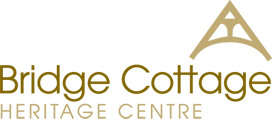Women of Wealden Suffrage
We were pleased to host an exhibition ‘Women of Wealden Suffrage’ which explored and celebrated the 100th anniversary since Parliament passed a law which allowed some women, and all men, to vote for the first time – the 1918 Representation of the People Act. This was an immersive community exhibition offered with support and collaboration from many local organisations and other historical groups within Sussex such as:
The two week programme of events, talks and workshops ran over 21st May – 2nd June 2018.
If any community group or historical society would like to loan the displays we are able to travel this exhibition. Please contact education@bridgecottageuckfield.co.uk for more information.
#WOWSuffrage
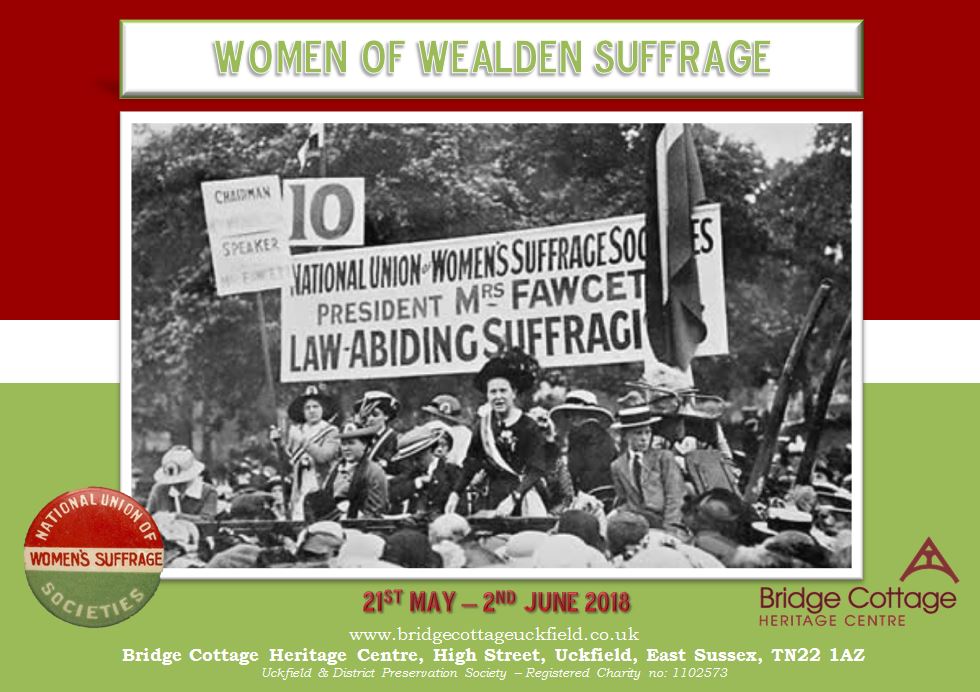
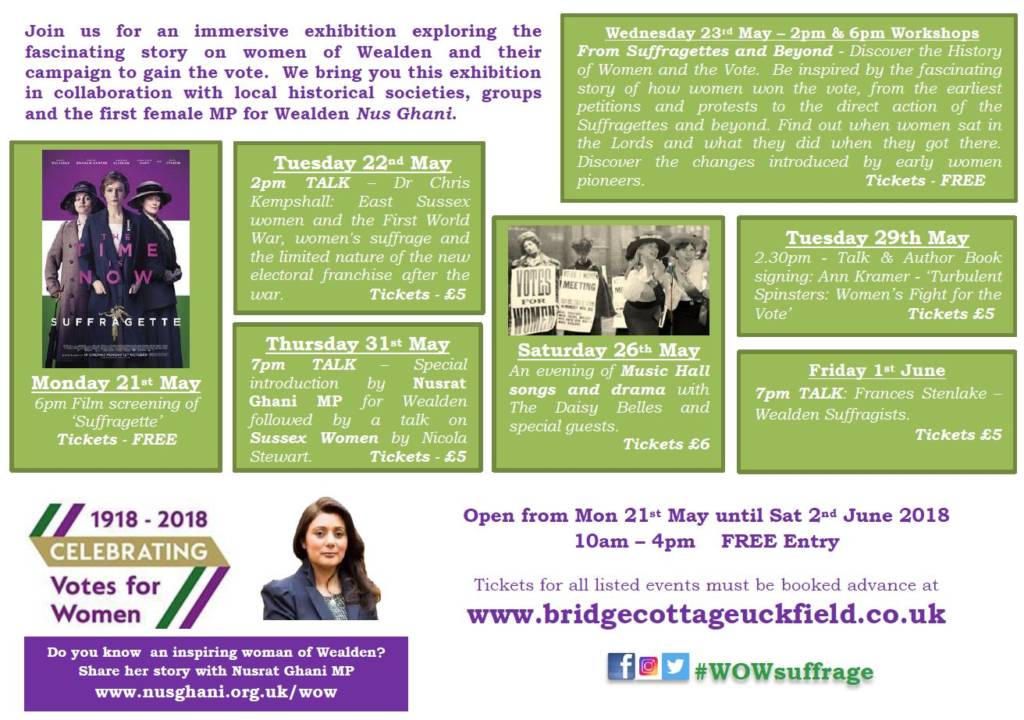
Download the exhibition Leaflet – WOW Suffrage.
Check out all #Vote100 events happening nationwide here
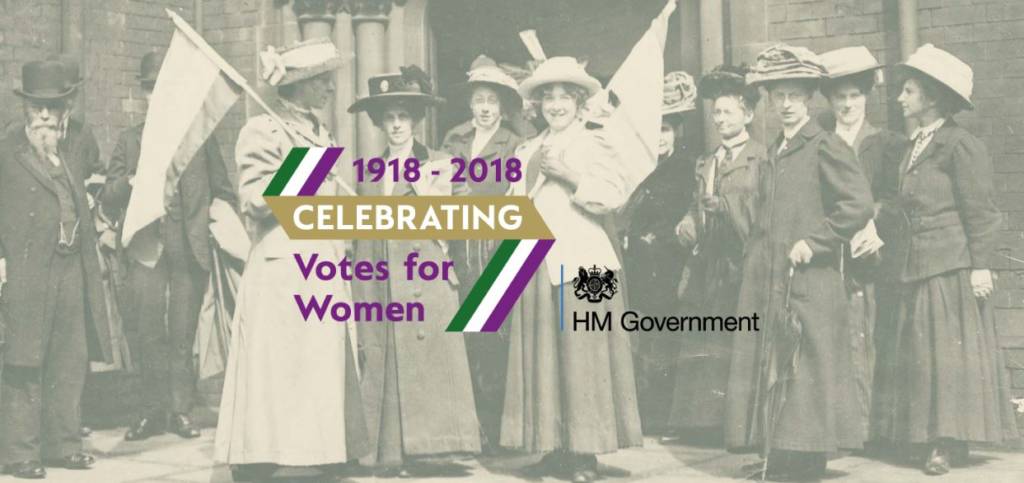
Pictured: WSPU poster by Hilda Dallas, 1909
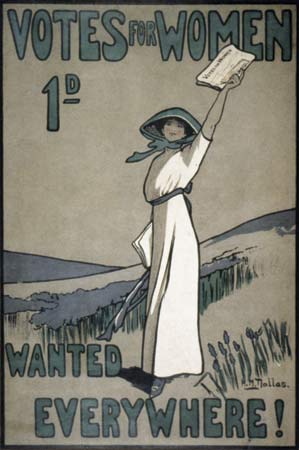
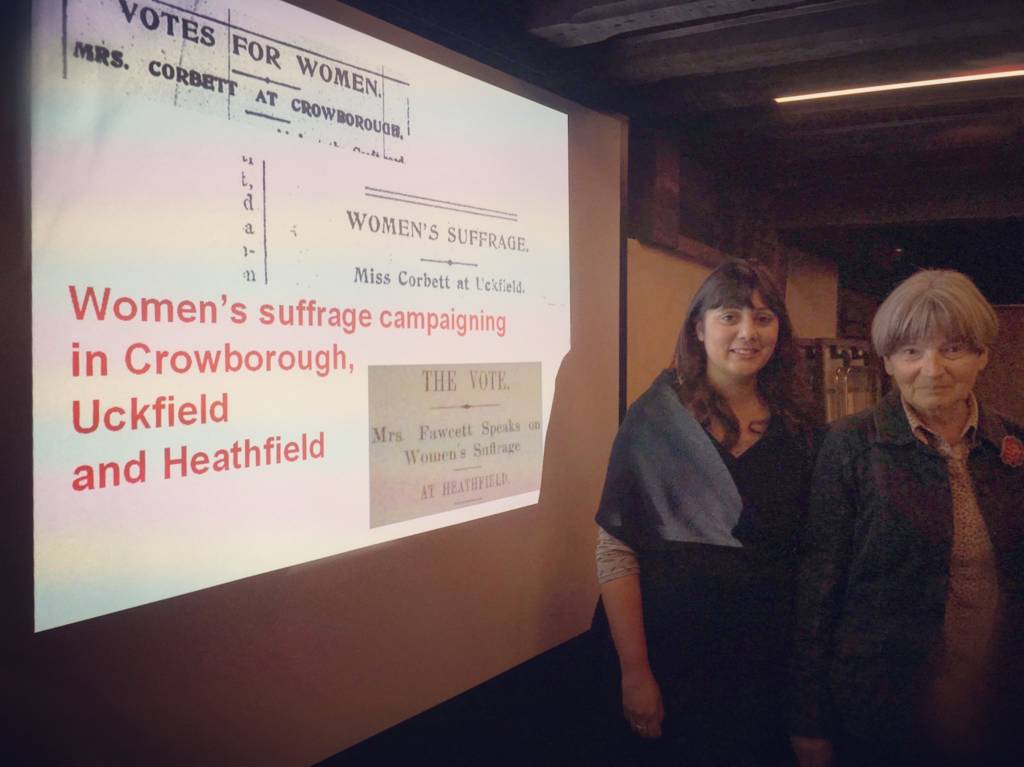
(Pictured: Nus Ghani MP & Frances Stenlake)
In November 2017 we had Frances Stenlake, local historian and exhibition researcher, talk about the Women’s Suffragist campaign in Crowborough, Uckfield and Heathfield. (pictured above)
Nus Ghani MP attended and spoke about the #VOTE100 Parliamentary exhibition and invited all constituents.
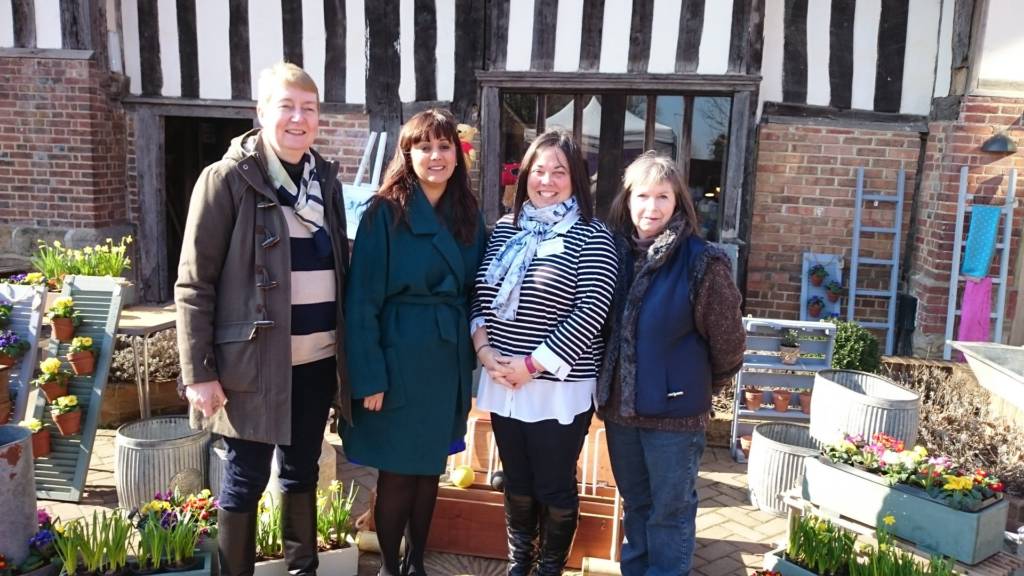 Here pictured (left to right) Jeannette Towey (Wealden District Councillor), Nusrat Ghani (MP for Wealden), Nicola Stewart (Bridge Cottage Heritage Centre Education Officer) and Liz Penton (Bridge Cottage Heritage Centre Manager) – who worked together on bringing together an immersive exhibition featuring inspiring women, past and present.
Here pictured (left to right) Jeannette Towey (Wealden District Councillor), Nusrat Ghani (MP for Wealden), Nicola Stewart (Bridge Cottage Heritage Centre Education Officer) and Liz Penton (Bridge Cottage Heritage Centre Manager) – who worked together on bringing together an immersive exhibition featuring inspiring women, past and present.
Do you know an inspiring woman? Nominate her for a feature in our #WOWSuffrage 100 wall, celebrating the positive contribution of woman today within our community. Submit your nomination to www.nusghani.org.uk/wow or email nicola@bridgecottageuckfield.co.uk
Join us on 25th June 2018 3-5pm to discuss democracy and the history of the vote at our EQUALITEAS event.

See what the Press are saying about #WOWsuffrage
Here pictured below are two inspiring women, past suffragists and residents of Wealden.
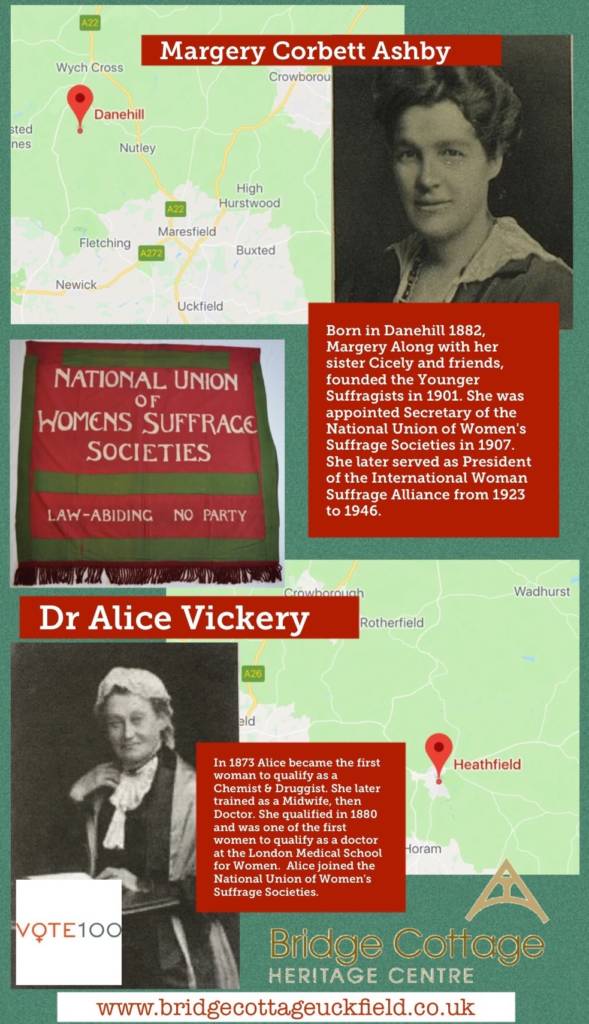
Watch BBC footage of Dame Margery Corbett-Ashby aged 90 at the time of this interview, Dame Margery Corbett-Ashby remembers sharing a platform with the ‘extremely brilliant’ Pankhursts and recalls the split between the moderate and militant wings of the early suffragette movement. Speaking from the experience of a lifetime devoted to improving the lot of women, she looks forward to the day when flexible working conditions will help balance the needs of career and childcare for young mothers.
On 26th July 1982, Margaret Thatcher gave a Speech on
Women in a changing World in which she spoke at length about 1st Dame Margery Corbett-Ashby in her Memorial Lecture. The full transcript is available
here. We will have this displayed at our exhibition.
Women of Wealden – Suffrage Campaign
#WOWSuffrage
Wealden has a special women’s suffrage story of its own to contribute to the national marking of the centenary of the granting of the Parliamentary vote in February 1918 to women aged 30 and over.
Dr Sophia Jex-Blake was a major figure in the women’s suffrage movement. In the 1870s she had led the battle at Edinburgh University for women to enter the medical profession. She founded the Edinburgh School of Medicine for Women and taught there until, on her retirement in 1899, she and her partner, Dr Margaret Todd (c1859-1918), came to live in her native Sussex: at Windydene, Mark Cross.
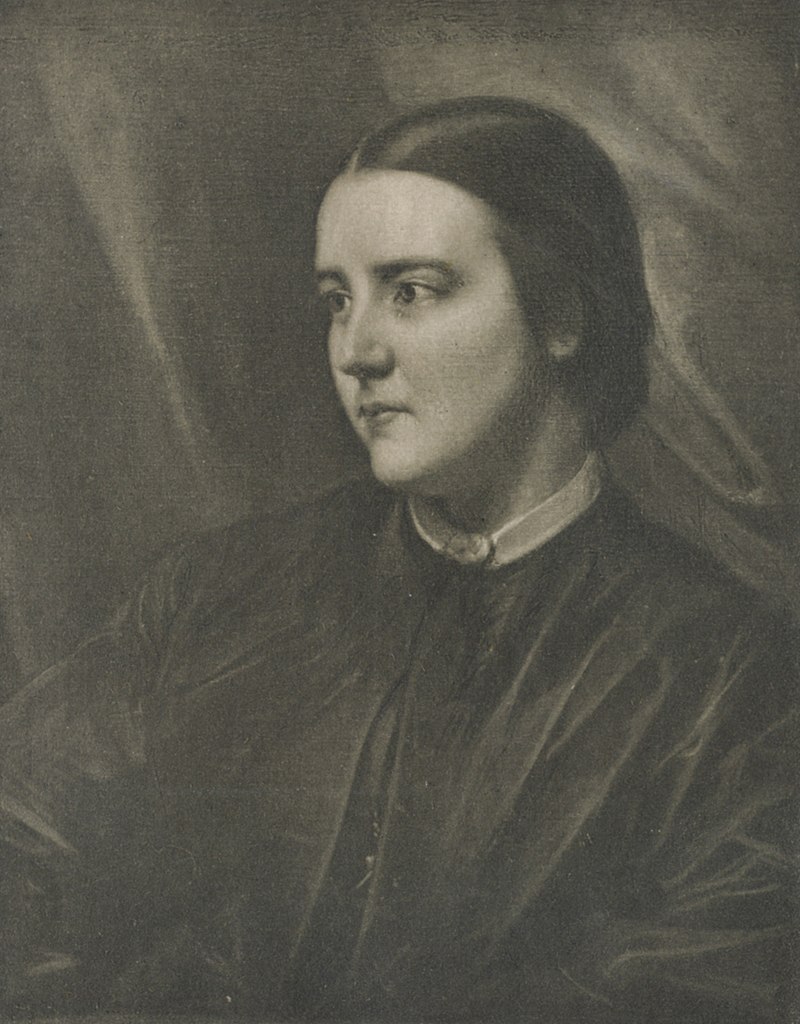
(Portrait by Samuel Laurence 1865)
As a campaigner for the vote, she spoke at meetings and wrote letters to the Times, always insisting that taxation and representation should go together and that all taxpayers alike should have a voice in the governing of the country.
‘Of course, if male taxpayers assumed the whole financial responsibilities of the nation, the position would be different. As, however, I have not yet heard of any such proposal, and have very substantial proof of the large claims made on the purses of women, I really fail to understand the mental condition of those who think it just to deny them the correlative rights that should go with such claims.’
Sophia Jex-Blake was clearly an inspiration to certain other Rotherfield residents. They joined the Women’s Tax Resistance League (WTRL), formed in 1909 with the rallying cry, ‘No Vote, No Tax’. Members would refuse to pay their taxes, then bailiffs would seize goods to the required value and hold public distraint sales to which the ‘tax resisters’, to attract as much publicity for the cause as possible, would invite their friends and supporters, and the press.
This method of campaigning, although non-violent, was nonetheless newsworthy, and was followed by the two local weeklies of the time, the Kent and Sussex Courier and the Crowborough Weekly.
The Kent and Sussex Courier reported at the beginning of July 1912, just months after the death of Sophia Jex-Blake, that Miss Maud Roll, of Rotherfield, would be this district’s first WTRL ‘martyr’ and that her passive resistance would be watched with great interest. She would be supported by Mrs Kineton-Parkes, secretary of the WTRL, by Dr Charles Drysdale, of Cherry Croft, Heathfield, secretary of the Men’s League for Women’s Suffrage (MLWS), and by Honnor Morten, of Oakdene, Rotherfield, a social worker, and writer and lecturer on nursing and health care.
The following week, the Crowborough Weekly called the ‘No Vote, No Taxes Sale’ an event that was unique in the history of Rotherfield. Six silver teaspoons belonging to Miss Maud Roll were auctioned. Supporters were present in force, and the more prominent among them drove up to the Square, where the proceedings were conducted, in a carriage drawn by a pair of horses and displaying their posters. Curiosity brought many residents to the scene of the gathering, which was ‘of a perfectly orderly description’.
A meeting was held on the spot, chaired by Honnor Morten. A resolution moved by Mrs Kineton Parkes, that women were justified in refusing to pay taxes until the Government granted them the vote on equal terms with men, was seconded by Dr Drysdale. The resolution was carried with one dissentient.
Dr Drysdale expressed admiration of the WTRL. This form of protest could not be objected to as violent or unladylike. It seemed to him one of the most excellent methods of propaganda.
The spoons were returned to Miss Roll the same evening by Dr Helen Webb, secretary of the Rotherfield and Mark Cross Women’s Suffrage Society, as a present from the committee.
The Kent and Sussex Courier called the event ‘a village diversion’.
‘The picturesque village of Rotherfield was in quite a holiday mood on Saturday evening. The villagers turned out en masse in the Square to witness a demonstration organised by the WTRL. The local inhabitants apparently regarded the affair as a pretty little joke, and were bent on having a good time. They were content, however, to enjoy themselves quietly and politely, and were, in fact, quite as passive as the resisters themselves. Probably this was due to their evident agreement with the demonstrators. There were few queries as to the ‘why and wherefore’ of the little event, for had not the village discussed the matter and little else, for a whole week beforehand?’
The following year, the supportive Daily Herald carried a notice of a public auction and protest meeting to be held at Mark Cross on 24 May. The Kent and Sussex Courier reported that Miss Maud Roll and Miss Honnor Morten of Rotherfield had again refused to pay their taxes and had yielded to the police a silver salver and a gold ring for public auction.
According to the Daily Herald, these items were sold from a wagonette on the village street where a crowd of more than 150 had assembled. Immediately after this second distraint sale, another protest meeting was held by the WTRL. Maud Roll presided, declaring that she and Honnor Morten would be at Mark Cross crossroads every year until they won their rights. A large crowd, including numerous well-known ladies and gentlemen, and several doctors, Margaret Todd among them, was addressed by speakers from the WTRL and the MLWS. The usual resolution to justify the women in refusing to pay taxes until granted representation was carried unanimously.
Suffrage literature was distributed by a corps of women carrying propaganda banners. Some people in the crowd made a small bonfire of the papers distributed.
Honnor Morton was actually absent from this meeting because of illness, and the Kent and Sussex Courier, announcing her death some weeks later, paid tribute to the indomitable enthusiasm with which, while health and strength lasted, she was accustomed to advocate her causes in the face of all opposition.
In June 1914 Maud Roll was the subject of a third distraint sale, again attended by Mrs Kineton-Parkes, when a silver dish was auctioned in the Pantiles Assembly Rooms, Tunbridge Wells. The ‘lively protest meeting’ held outside on the Common afterwards was addressed both by Mrs Kineton-Parkes and by Mrs Cavendish Bentinck of the new Constitutional Society for Women’s Suffrage. It ended with the adoption of the motion, ‘We protest against the seizure and sale of Miss Roll’s goods and consider the women tax-payers of this country are justified in refusing to pay all Imperial taxes until they have the same control over Imperial expenditure as the male tax-payers possess’.
Miss Roll declared that she could have found a more pleasant way of spending the afternoon than standing on a trolley in the hot sun, but she and her co-workers were engaged in a fight that, although long, was certain to result in victory.
With the outbreak of war later that summer, suffrage campaigning was discontinued. From 1924 until 1934 Maud Roll was to serve on the Uckfield Rural Council as one of the three members for Rotherfield, and as a JP from 1931 until she moved to Tunbridge Wells in the early 1940s.
Text © Frances Stenlake 2018
In the years preceding the First World War many women in East Sussex were active in the Suffrage campaign, as explained by author and local historian Frances Stenlake.
Women’s suffrage campaigners in the Crowborough, Uckfield and Heathfield area, as elsewhere in rural Sussex, were likely to be ‘suffragists’ rather than ‘suffragettes’, i.e. emphatically non-militant and law-abiding, and members of the National Union of Women’s Suffrage Societies (NUWSS) rather than of the Women’s Social and Political Union (WSPU).
The NUWSS, founded in 1897, was led by Millicent Garrett Fawcett. Its colours were green, white and red. The colours green, white and mauve were those of the WSPU, founded by Emmeline Pankhurst in 1903. Its members, who went in for militant, law-breaking tactics, were dubbed ‘suffragettes’ in 1906 by the Daily Mail, and the terms ‘suffragist’ and ‘suffragette’ have been used indiscriminately ever since.
Although it has always received less attention than the WSPU, the NUWSS was a much larger organisation with a far greater membership, and its branches across Sussex formed part of the Surrey, Sussex and Hampshire Federation of Women’s Suffrage Societies.
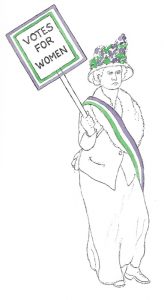
A Suffragette WSPU Member – Copyright Malcolm Bull
The Corbett family of Woodgate (now Cumnor House) Danehill were leading figures in the formation of branches in the Central Sussex and Wealden areas. Marie Corbett, the first woman on the Uckfield District Council, and her husband Charles, Liberal MP for the East Grinstead constituency 1906-10, founded the Liberal Women’s Suffrage Society and the East Grinstead Women’s Suffrage Society, and encouraged the formation of a Crowborough branch in early 1911. Its President was Sybil, Countess Brassey, who was also President of the Bexhill, Hastings and St Leonard’s Women’s Suffrage Society.
Later that year, the Sussex Express reported that a women’s suffrage meeting in the Public Hall, Uckfield, ‘was largely attended, including many of the principal families in the neighbourhood’. Here too Countess Brassey presided and ‘that well-known speaker’ Marie Corbett took part.
By June 1912, at a meeting in the grounds of Mrs Kensington’s house in Haverbrack, Buxted, Marie Corbett could invite those present to join the Uckfield and District Women’s Suffrage Society ‘in the course of formation’.
Heathfield and District was another branch of the NUWSS and the diaries of the Reverend Gregory Pennethorne, Vicar of All Saints, Old Heathfield, give valuable information about its activities. Unfortunately, the 1912 volume is missing, but a report of a meeting in March 1912 of over 300 people in the Recreation Hall filled two columns of the Sussex Express.
The Revd Pennethorne, as usual, presided, supported by, among others, Marie Corbett, Mrs Loesch of Barklye, and Mrs Logie Pirie of Tottingworth Park. So many names are listed that the event looks like a social gathering of all the great and the good of Heathfield.
The Revd Pennethorne’s 1913 diary records further women’s suffrage meetings in 1913 but by the end of that year his health must have been failing: he neither attends nor notes any more such events, so we don’t have his comments on a big public meeting in the Heathfield Recreation Hall in March 1914, addressed by Millicent Garrett Fawcett herself.
In the chair was Lady Eleanor Cecil of Chelwood Gate, whose husband, Lord Robert Cecil, was, with Charles Corbett and Heathfield activist Dr Charles Vickery Drysdale, a founder member of the Men’s League for Women’s Suffrage. Millicent Garrett Fawcett was applauded for emphasising that militant methods were antagonistic to the very principles for which Suffragists stood.
Text © Frances Stenlake 2018
Women’s Suffrage Pilgrimage
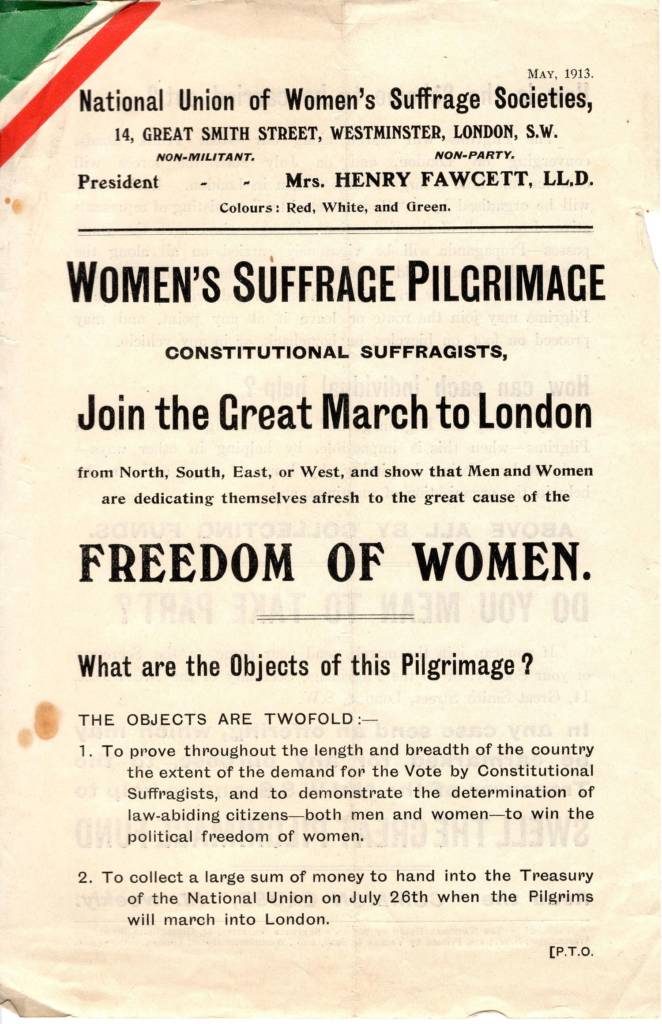 Did you know in July 1913, a march from Brighton to London brought together women suffragists from across Sussex – from Eastbourne to Littlehampton, Horsham, Cuckfield, and East Grinstead. They represented branches of the National Union of Women’s Suffrage Societies, led by Millicent Garrett Fawcett. Because NUWSS methods were emphatically non-militant, its members never gained the notoriety of Mrs Pankhurst’s ‘suffragettes’, and, at a provincial level, reporting of their activity depended on a sympathetic local press.
Did you know in July 1913, a march from Brighton to London brought together women suffragists from across Sussex – from Eastbourne to Littlehampton, Horsham, Cuckfield, and East Grinstead. They represented branches of the National Union of Women’s Suffrage Societies, led by Millicent Garrett Fawcett. Because NUWSS methods were emphatically non-militant, its members never gained the notoriety of Mrs Pankhurst’s ‘suffragettes’, and, at a provincial level, reporting of their activity depended on a sympathetic local press.
(Leaflet advertising the Pilgrimage. Women’s Library Collection, LSE (Ref: 7nor 3)
(Pictured Top: Suffragists at Clayton 21 July 1913. Below: Suffragists at Cuckfield 22 July 1913)
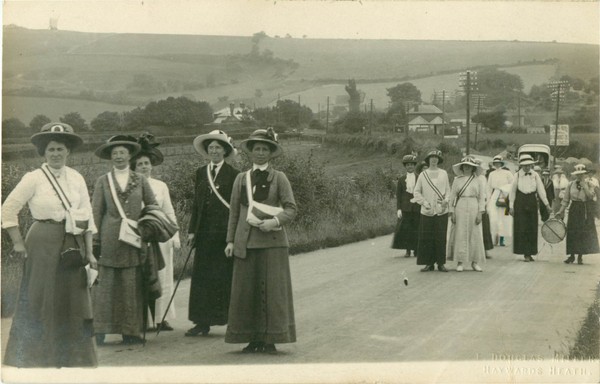
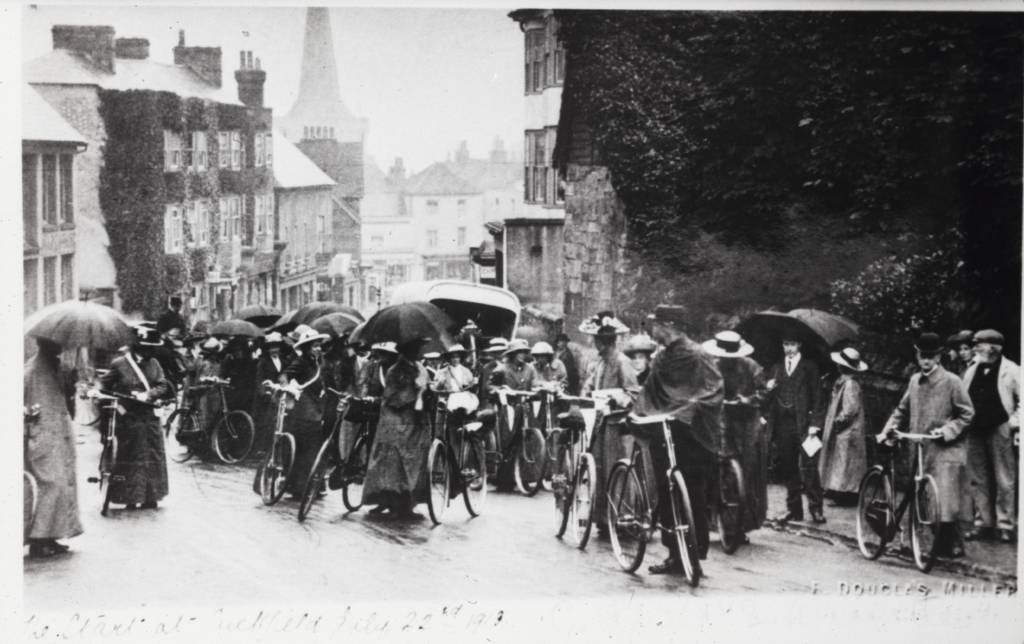
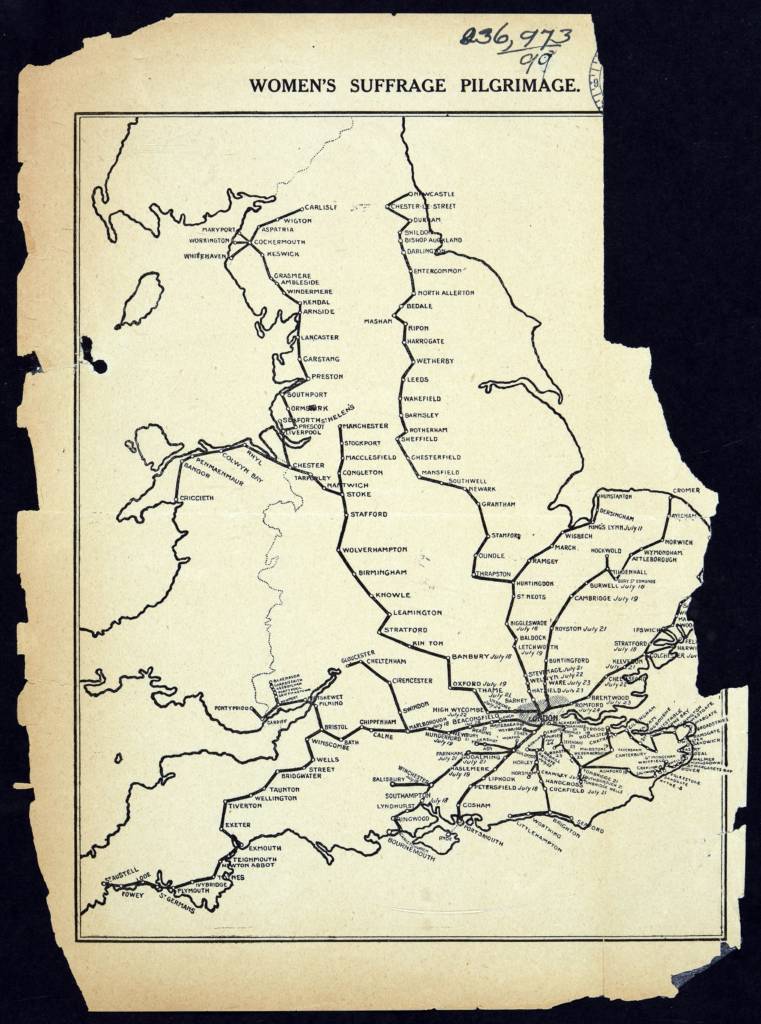
(Map: Held by The National Archives shows many (though not all) of the routes and stops taken by the pilgrims.)
